With just the blink of an eye, Akasa Air completed its first year in the skies. On August 7th, 2022, Akasa Air took its inaugural flight from Mumbai to Ahmedabad as QP 1101, and I had the privilege of being on board. To celebrate its first birthday, I was invited by Akasa Air to join the celebrations. I chose to fly to the world's oldest city, Varanasi, for this special occasion. For those unfamiliar with Akasa Air, it was founded by Vinay Dube, the former CEO of Jet Airways and Go First. Indian billionaire trader Rakesh Jhunjhunwala invested in the airline and holds a 40% stake. Now, let's delve into the review.
Check-in
Akasa Air operates all its flights from Mumbai Airport's Terminal 1. At Mumbai Airport’s Terminal 1, Gate 1 is dedicated to IndiGo Airlines, while all other airlines use Gate 2. My flight was originally scheduled for departure at 12:00 PM, but they promptly notified us via SMS and email about a rescheduled departure time of 12:35 PM. I arrived at the airport around 10:15 AM, and the Akasa Air counters were pleasantly empty. I availed the Priority Check-in and Bag service, allowing me to breeze through check-in. The staff at the check-in counters were sweet and helpful. The option to purchase priority services for just 400 rupees is worthwhile. The counters were beautifully decorated in the airline's brand colors and featured a photo booth for passengers to take pictures. It's worth noting that Akasa Air staff now handle check-in at Mumbai Airport, whereas BWFS used to manage it in the past. The distinctive uniforms of the Akasa Air ground staff set them apart and looked impressive.
Boarding Gate
Boarding for the flight was conducted via an aerobridge. There was a gate change, and they promptly communicated this through SMS and email to all passengers. The boarding gate agents took photos with passengers holding placards to celebrate the airline's first birthday. Boarding was efficiently carried out in zones, prioritizing senior citizens, travelers with infants, passengers requiring wheelchair assistance, and those who purchased priority boarding.
Aircraft Information
Akasa Air's fleet includes the Boeing 737-8MAX and a high-density version of the Boeing 737-8-200MAX. Our flight to Varanasi was operated by the 4-year-old VT-YAG, which was delivered to Akasa Air in November 2022. This particular aircraft did not feature Akasa Air's seats. The seats were black leather with no adjustable headrests, and in comparison to the aircraft with Akasa Air's seats, these seats were less comfortable. The cabin crew consisted of 5 members who were friendly and welcoming. The cabin interior was adorned with brand-colored lights during boarding, creating a visually appealing ambiance. The seats in passionate purple paired with the colorful lighting presented an outstanding visual. This use of colorful lights certainly enhanced the overall passenger experience and made a positive impression on the airline.
Seat
For this flight, I was assigned seat 1A in the first row of the aircraft. The legroom was impressive, but aviation enthusiasts won’t get a proper view of engines, and a lot of bending to catch even a glimpse of the wingtip. For aviation enthusiasts, seats in the 3rd and 4th rows will give a better view of the engine on the Boeing 737MAX aircraft. This aircraft was configured in an all-economy layout with 189 seats. Unfortunately, VT-YAG lacked USB charging ports.
Meal
Immediately after takeoff, the cabin lights shifted to blue and then orange. During an interaction with the cabin crew, I learned that orange and purple lighting is only possible during boarding and deboarding. I hope Akasa Air considers extending these brand-colored lights throughout the flight. Meal service began shortly after takeoff, featuring items from Café Akasa. I particularly enjoyed the Mushroom & Brie Croissant sandwich, which I've become a fan of since my first flight with Akasa Air. Accompanying this were the Go Bananas tri-layer pie, and the Mi-Lit Salad. All these items must be pre-booked. I highly recommend trying the Mushroom & Brie Croissant and Go Bananas – though slightly more expensive, they're definitely worth it. Akasa Air boasts an extensive menu with exceptional variety and taste. Taj Sats caters for Akasa Air.
As it was the airline's birthday flight, chocolates were distributed to all passengers, and headrest covers featured first-year birthday branding.
After Landing
We had a smooth touchdown in Varanasi and taxied to a remote parking gate. The ground crew stood in line holding Akasa Air's first birthday placards, creating a visually pleasing sight. Since it was a remote gate, we had to take a bus to the terminal. A small ceremony was held to celebrate the airline's first birthday, with the ground and flight crews cutting a cake. Thanks to the priority label on my bag, the ground crew kept our bags separate near the belt – a thoughtful gesture that I appreciated.
RETURN LEG
Check-in
At Varanasi Airport, Akasa Air doesn't yet offer Digi Yatra services. For this return flight, I again availed Priority Check-in and Bag services. Despite the smaller size of Varanasi Airport, they still had separate priority counters. At this time, Akasa Air only had one departure from Varanasi, resulting in minimal lines at the counters. When compared to newer Indian airports, Varanasi Airport's facilities appear outdated. The security area is limited in space, and there's inadequate information about carry-on items. First-time flyers seemed to struggle at security, leading to long queues.
Boarding Gate
Our aircraft was parked remotely, necessitating boarding via bus. IndoThai, the ground handling company at Varanasi Airport, provided the bus for boarding. As with Mumbai, boarding was organized by zones. Priority was given to senior citizens, passengers with infants, wheelchair users, and those with priority boarding. Ground staff were present near the aircraft to guide passengers according to their seats as they boarded from both the front and back, ensuring a seamless and efficient process. This was a significant advantage of bus boarding, and aviation enthusiasts like us had the opportunity to capture some great photos.
Aircraft Information
Once again, our flight was operated by a Boeing 737-8MAX, registered as VT-YAB. This 4-year-old aircraft was delivered to Akasa Air in July 2022.
Seat
For this flight, I was assigned seat 1F in the first row. The legroom was excellent. Unlike VT-YAG, this aircraft featured seats in Akasa Air's brand colors, USB ports, and an adjustable tray table in the first row. This aircraft was in an all-economy configuration with 189 seats.
Meal
For this sector, Café Akasa offered an Onam Special meal available for pre-booking until August 31st, 2023. The meal included Spicy Kadala Curry wrapped in Malabari Paratha, served with Nei Appam, Ada Pradhaman, and a choice of beverage. I highly recommend trying this unique offering if you're from South India. Alternatively, you can opt for my favorite – the Mushroom & Brie Croissant.
After Landing
As we descended, Mumbai welcomed us with rain. After a smooth touchdown and a short taxi, we arrived at Alpha Gates at Mumbai Airport. Deboarding was through an aerobridge. After a short walk, I reached the baggage belt; Akasa executives were present with priority bags near the belt, reinforcing the value of Priority Check-in and Bag services. Again This thoughtful gesture by Akasa Air staff was truly appreciated, even at a busy airport like Mumbai. It's worth mentioning that I haven't observed any other LCC airline providing such a service for passengers who opt for priority services.
Overall, the experience was truly memorable. It echoed the excitement of the first flight. The most significant positive change was the brand-colored cabin lighting during boarding. I hope that this vibrant ambiance will extend beyond boarding and disembarking. I extend my gratitude to Akasa Air for yet another memorable flight.
Read next
AAI Chairman Believes Airport Congestion is Positive Sign for Indian Aviation Sector
Radhika Bansal
16 Aug 2023
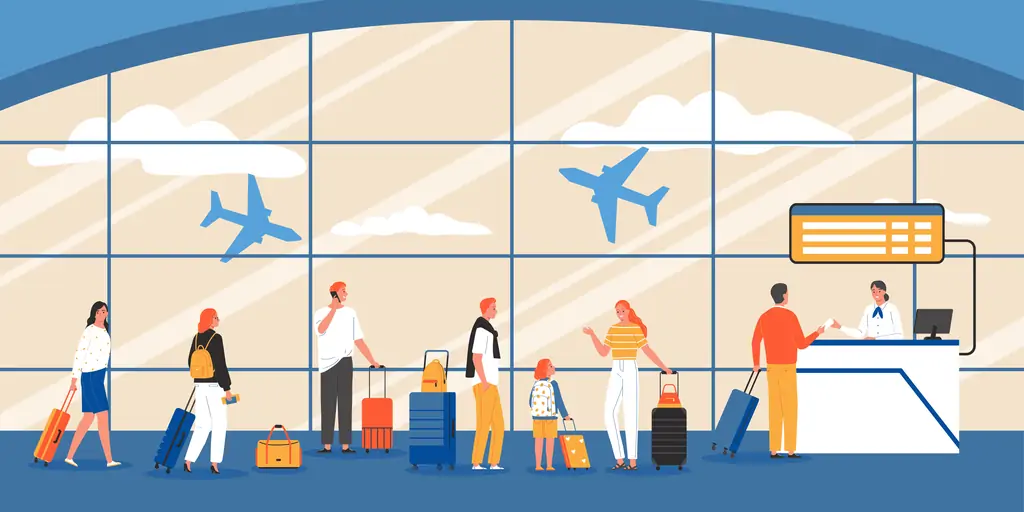
Noting that the congestion of passengers at several airports in the country is a positive sign for the aviation sector, the chairman of the Airports Authority of India (AAI) Sanjeev Kumar on Tuesday, August 15 said that it will meet the challenge of infrastructure development in the coming years.
"Congestion is a good thing and we must address the issues. Our minister (Jyotiraditya Scindia) is proactive on this. Last six to eight months he has taken many steps to meet the growing need of passengers and improve the infrastructure at the airports. We need to improve infrastructure at the airports through increasing the more gates, counters and with manpower which needs to increase by airports, airlines and airports operators," the AAI chairman told ANI.
Congestion at the airports in the past several months was monitored by Home Minister (Amit Shah) himself, said AAI chairman. While unfurling the flag on the occasion of Independence Day at Delhi Air Traffic Services Complex of Airports Authority of India at IGI Airport, New Delhi, the AAI chairman also emphasised that "it's a proud moment that India has placed historical aircraft's order almost 1000 planes for the future."
The AAI chairman also stressed that next year over 100 airports run by AAI will operate with renewable energy. "Being a progressive organization we must be sensitive towards the environment. Following the same, the Authority plans to bring all airport buildings and new airports under GRIHA-5, i.e. target to run all operational airports with renewable energy by December 2024," he added.
Airports Authority of India (AAI) celebrated the 77th Independence Day with patriotic fervour and zeal. While addressing the gathering, the Chairman highlighted the sacrifices made by the freedom fighters and paid tribute to them. He also highlighted the role of the Indian civil aviation sector in the progress of the nation and said that AAI is efficiently working towards making it one of the best in the world.
Ministry Tackling the Congestion
The Ministry of Civil Aviation (MoCA) announced that it is working on multiple measures to mitigate any likelihood of airport congestion during the upcoming festive season. The issue of congestion at the major airports was witnessed in the last year's festive season leading to longer waiting times at various airports. Among the steps that are being taken to tackle the problem are: additional manpower deployment by Central Industrial Security Force (CISF) in two phases by October 2023 and November 2023, adding more self-baggage drop facilities are airports, use of social media for real-time updates and reinforcement of the Bureau of Immigration (BoI) staff by October 2023.
"To support security infrastructure at airports, additional X-ray machines, check-in counters, and self-baggage drop facilities will be added at airports", the ministry said in a release. "Use of social media platforms to provide real-time updates to passengers to make airport transit seamless. Information regarding enhancement in processing capacity and expansion of security check areas will also be communicated," it added. Digi Yatra was launched on December 1 last year. It offers a biometric-enabled travel experience based on facial recognition technology.
Last year, Minister of Civil Aviation Jyotiraditya Scindia visited the Delhi Airport to inspect the arrangements and directed the airport operators at Delhi, Mumbai, Bengaluru, Hyderabad, Kolkata, and Chennai to identify bottlenecks and augment capacity to meet the growing passenger demand. The main causes of the congestion were: lack of sufficient airport infrastructure, inadequate X-Ray screening machines, bunching of flights particularly at peak hours, and inadequate CISF manpower and immigration manpower to meet the requirement.
"For improving requisite infrastructure at major airports, various actions were immediately taken. The number of X-ray machines was significantly increased at pre-embarkation security checkpoints. Additional entry gates were set up. Waiting time screens were set at entry and Police Naka Points to apprise passengers and the waiting area was increased. Support manpower was deployed to assist passengers. CISF was actively roped in for increasing CISF deployment immediately followed by fresh augmentations. Airports operators were directed to ease out the number of flights during peak hours," it added.
Read next
DGCA Sets Up Committee to Enhance Gender Equality in Indian Aviation Industry
Radhika Bansal
16 Aug 2023

Civil aviation regulator DGCA has set up a four-member committee to provide suggestions for achieving gender equality in the aviation sector in India. The Directorate General of Civil Aviation (DGCA) issued an order on August 10, 2023, stating that the objective of this committee is to suggest steps that DGCA should take to bring gender equality to the aviation sector.
The four senior officers appointed as members of the committee are Survita Saxena, Director (Operations); R P Kashyap, Director (Training); Pavan Malviya, Deputy Director (Administration); and Kavita Singh, Deputy Director (Aircraft Engineering Directorate). They are supposed to formulate norms and submit them to DGCA which the regulator will further circulate among aviation stakeholders to adopt and bring in practice for gender equality. "The committee will submit its report/recommendation within six months from the date of its constitution," the order said.
The initiative is in line with the commitment of International Civil Aviation Organisations (ICAO) which aims to promote participation of women and achieve an aspirational goal of 50-50 (women-men) by 2030 at all professional and higher levels of employment in the global aviation sector.
Aviation professionals, operators and stakeholders have lauded the constitution of the committee and said the move will help create new opportunities for women in this field. They said that the Indian aviation sector already has a fair presence of female workers in certain professional categories such as pilots. Prime Minister Narendra Modi also acknowledged this fact in his address to the nation from the ramport of Lal Quila on the 77th Independence Day when he said that India has the highest number of women pilots in the world. However, experts said there is still a huge scope to encourage and skill women to join and contribute their role in the business of flying.
Comments from Industry Professionals
Radha Bhatia, Chairperson, Bird Group, who heads the non-profit organisation Women in Aviation India Chapter (WAI), said that promoting gender equality in the aviation industry is undoubtedly crucial. "It's essential to prioritize the inclusion of women, even though India boasts the highest percentage of women pilots globally at 15%. However, this figure still leaves significant room for improvement. The current representation of women in the pilot community, though noteworthy, falls short of the goal of true equality. Achieving gender equality requires a collaborative effort from all stakeholders involved. This collective endeavour encompasses airlines, airports, ground handlers, maintenance, repair, and overhaul (MRO) services, as well as support services. It's essential to extend this initiative to include immigration processes, Bureau of Civil Aviation Security (BCAS), customs and ATC as women representation is low in these departments."
Consulting & research firm CAPA – Centre for Aviation, in May 2022, in its report titled 'Gender Diversity and Corporate Performance in Aviation' said that the share of women on boards of the top 15 countries is 19% in India whereas France has the highest, ie, 49%. It also said that although female participation in the labour force is relatively low across the world, India lags way behind many other countries. The report stresses the need to address the supply side to achieve meaningful progress as the legal and institutional framework, designed to provide equal opportunity, access and resources for women, alone can't help.
Ajay Ahlawat, a retired group captain who served the Indian Air Force for several years before coming into civil aviation, felt that the data related to female participation in various roles in the aviation sector lacks integrity. "Since there are no mandatory disclosure norms of gender-specific workforce-related data in the aviation industry in India, many aviation companies do not regularly report the strength of the female workforce. Therefore, numbers cited in various journals are based on anecdotal data," Ahlawat said.
According to him, for the committee of experts to make qualitative recommendations, it would need access to accurate, updated and verifiable data for as of now, a comprehensive study on the women workforce within the aviation industry is lacking.
Bhatia also said, "It's imperative to gather such data for a more informed approach. The need to encourage gender equality was also emphasised by the prime minister during his recent Independence Day speech. Therefore, data collection is important. To address this, all departments should take the initiative to collect this vital information and submit it to the Civil Aviation Ministry which is the nodal agency."
Despite the challenges, Pulak Sen, founder secretary general, of the MRO Association of India, is quite optimistic about the current trend as he said, "I can see more and more women are entering the aviation sector in India and I believe women are a workforce to reckon with in times to come."
Read next
Rakesh Gangwal and family, co-founder of India’s largest IndiGo Airlines, is looking at selling shares worth USD 450 million (INR 3,730 crore) through a block deal on Wednesday, August 16 industry sources indicated. It is understood that the Gangwal family has put 15.6 million shares for sale with a floor price of INR 2,400 per share, which is a 5.8% discount from the closing price on Monday, August 14.
Morgan Stanley, JP Morgan and Goldman Sachs are advising the Gangwal family on the deal. There is a lockup period of 150 days post-block deal. A block deal is a single transaction, with a minimum value of Rs 5 crore of a minimum quantity of five lakh shares, between two parties, in a separate trading window. Such deals occur at the beginning of trading hours.
IndiGo on the Rise
The current market cap of Interglobe Aviation is around INR 98,313 crore and the stock price has risen by more than 22% in the last six months. IndiGo had a net profit of INR 3,090 crore (USD 414.98 million) in Q1, with a revenue of INR 17,160 crore (USD 2.30 billion). At the operating level, EBITDA stood at INR 5,210.9 crore, over INR 716.9 crore in the corresponding period in the previous fiscal. EBITDA margin stood at 31.2% in the reporting quarter as compared to 5.6% in the corresponding period in the previous fiscal.
CEO Pieter Elbers said that his company was pleased to report a solid start to the year building on the positive momentum from the last two quarters. "We produced strong operational performance and welcomed the highest number of quarterly passengers which enabled us to generate the highest ever quarterly revenue and net profit for the quarter ended June 2023," Elbers said.
IndiGo also saw a rise in expenses in the June quarter due to engine-related costs, contractual obligations and digital transformation costs, while it fully rolled back the earlier salary cuts and paid out annual increments too. In terms of Q2, it plans to focus mainly on monitoring airport charges & maintenance costs.
The company plans to invest excess cash towards aircraft & engine acquisitions, ATRs, infrastructure, digitisation, etc. It is setting up a venture capital arm concerning investing in fields adjacent to aviation like travel & lifestyle, etc.
IndiGo share price fell more than 4% in early trade after a block deal in the equity shares of the company took place on exchanges. IndiGo shares declined as much as 4.84% to INR 2,425.00 apiece on the BSE. At 10:30 AM, IndiGo share price was trading 3.47% lower at INR 2460.00 apiece on the BSE.
Gangwal Family’s Association with IndiGo
Rakesh Gangwal started the process of selling his stake in IndiGo in September 2022. In February that year, he had stepped down from the InterGlobe Aviation board as a non-executive, non-independent director, and had said that he would sell his entire holding in IndiGo over five years. The company’s board had then unanimously approved the appointment of co-founder Rahul Bhatia as the managing director.
In September last year, Rakesh Gangwal and his wife Shobha divested a 2.74% stake in the company for INR 2,005 crore via open market transactions. In February this year, the Gangwal family sold a 4% stake for INR 2,900 crore via a block deal. InterGlobe Aviation is engaged in the business of providing domestic and international air transport services under the name 'Indigo'. Rakesh Gangwal along with Rahul Bhatia co-founded low-cost carrier IndiGo airline. “I have been a long-term shareholder in the company for more than 15 years and it’s only natural to someday think about diversifying one’s holdings,” Gangwal had said in his resignation letter then.
In September 2022, the Gangwal family and their trust sold a 2.8% stake through a block deal for USD 250 million or INR 2,000 crore. Following this, in February, it sold a 4% stake for INR 2,900 crore. The Gangwal family and their trust had cumulatively held a 36.61% stake in InterGlobe Aviation. According to the latest stock exchange disclosures, the Gangwal family holds a 29.72% stake. Rahul Bhatia and his associates hold the highest stake in the company at 38.14%.
Read next
India to Produce Sukhoi Superjet 100; UAC in Talks With Hindustan Aeronautics Limited
Radhika Bansal
16 Aug 2023
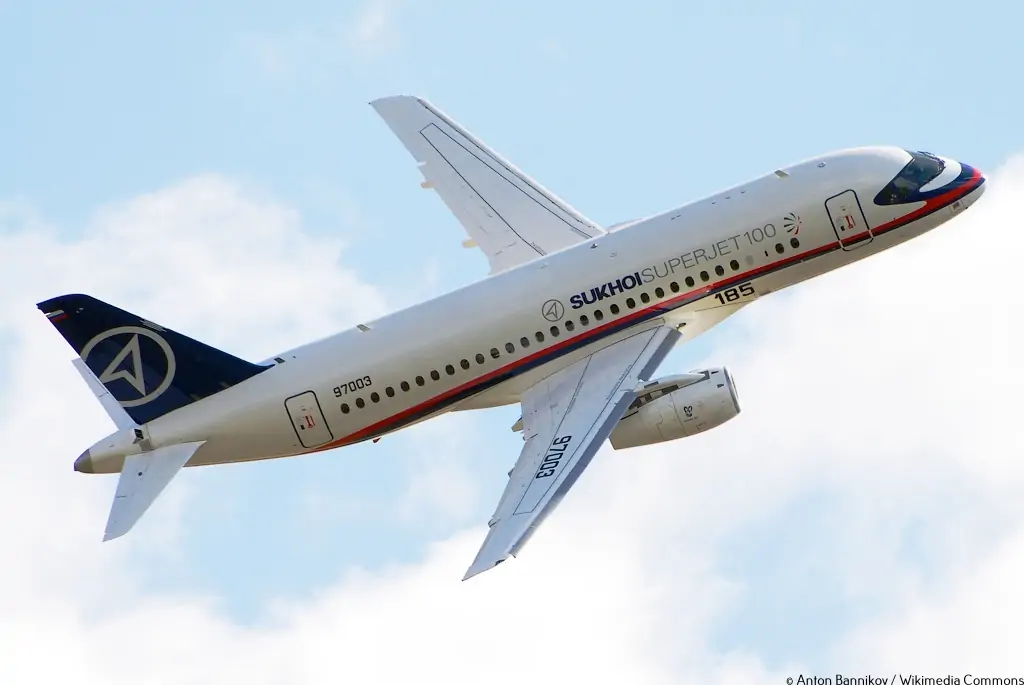
United Aircraft Corporation (UAC) CEO Yuri Slyusar recently spoke with the “Russia-24” television channel about the potential of UAC starting SSJ 100 production at the Hindustan Aeronautics Limited (HAL) factory in India.
“We still believe that under the import license at the HAL factory, which produces combat aircraft for the Indian Air Force, where they manufacture Su-30 aircraft – over 270 aircraft have been made there; it’s indeed a significant base, trained personnel, equipment, and refined processes. We could start producing SSJ aircraft for the Indian market there in a fairly short period,” he said.
Slyusar added that negotiations are currently underway with Indian colleagues. “It seems to me that negotiations are even more in the interest of the Indian side than ours because we have our Russian Superjet and will continue its production. For India, this represents a significant technological leap forward,” he noted.
In February, Slyusar indicated for the first time that discussions had taken place between UAC and India regarding the localization of SSJ 100 production and collaboration on the Il-114 and MC-21 programmes. Earlier on the same day, the chairman of UAC announced that the first flight of the upgraded version of the SSJ 100 aircraft constructed locally will take place in September. One test aircraft will participate in the tests conducted with the domestic PD-8 engines.
The Sukhoi Superjet 100
The Superjet 100 is a 100-seater civil aircraft designed and developed by Sukhoi Corporation, which has now been merged into UAC along with MIG Corporation. The other major aircraft manufacturing companies, Ilyushin and Tupolev, are also set to be merged with UAC soon. The Superjet could be the first Indian-made civil aircraft, which meets the requirements of national aviation authorities.
The Sukhoi Superjet 100 or SSJ100 is a regional jet designed by the Russian aircraft company Sukhoi Civil Aircraft, a division of the United Aircraft Corporation (now: Regional Aircraft – Branch of the Irkut Corporation). With development starting in 2000, it made its maiden flight on 19 May 2008 and its first commercial flight on 21 April 2011 with Armavia.
The 46–49 t (101,000–108,000 lb) MTOW plane typically seats 87 to 98 passengers and is powered by two 77–79 kN (17,000–18,000 lbf) PowerJet SaM146 turbofans developed by a joint venture between French Safran and Russian NPO Saturn. By May 2018, 127 were in service and by September the fleet had logged 300,000 revenue flights and 460,000 hours. By November 2021 the fleet had logged at least 2,000,000 hours. The plane has recorded three hull loss accidents and 86 deaths as of November 2021. In 2022, Sukhoi plans a Russified version of the body and electronic, without most of the Western components, the engine will also be replaced, using Aviadvigatel PD-8. Aeroflot has ordered 89 Irkut SSJ-Russified aircraft.
India with Aircraft Manufacturers
Boeing and Airbus do not produce aircraft as small as the SSJ-100. The Brazilian company Embraer, with E190, is the most formidable competitor in this market segment, but it is more dependent on Western countries for critical parts like the engine.
India has already begun discussions with Embraer, which is based in Brazil, and has shown a prototype of a Regional Transport Aircraft (RTA) that was designed by the National Aeronautics Limited (NAL). Smaller airports typically have shorter runways, making it difficult for narrow-body aircraft manufacturers like Airbus and Boeing to take off and land.
There are Indian airlines with regional aircraft, including IndiGo and SpiceJet, with ATR 72-600s and De Havilland Dash-8 Q400 turboprops, respectively. Hindustan Aeronautics is also producing a Dornier 228 regional aircraft with 19 seats for Alliance Air. Embraer and Sukhoi will presumably build a regional workhorse in response to the inadequacy of current capabilities.
Read next
Navigating the Skies: India's Ambitious Airport Expansion Plan and Cutting-Edge Passenger Experience Enhancements
Abhishek Nayar
16 Aug 2023
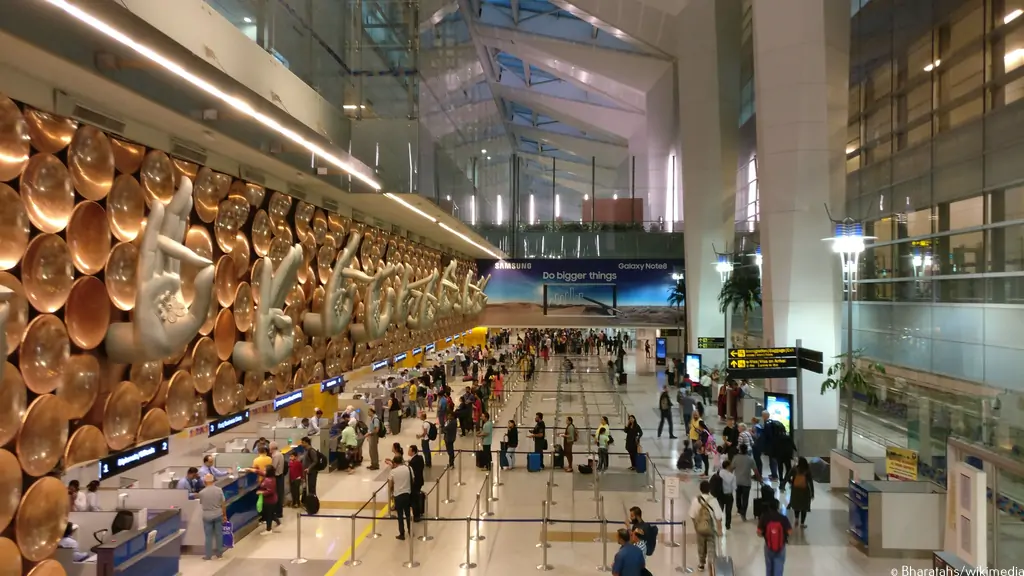
The Indian government has unveiled a comprehensive plan to construct ten new airport terminals in response to a projected 30% surge in domestic aviation passenger traffic by the upcoming year. This strategic expansion aims to address the mounting demand for air travel, as witnessed by a remarkable 25% year-on-year increase, propelling the passenger count to a record-breaking 12.1 million in July.
As part of this transformative initiative, the government is focusing on not only enhancing infrastructure but also bolstering connectivity to smaller cities, as exemplified by the imminent opening of three airports in Uttar Pradesh.
Coping with Escalating Passenger Traffic
In a bid to proactively manage the burgeoning passenger traffic, the Indian government has taken a bold step by committing to the development of ten new airport terminals across the nation. This proactive approach is rooted in the realization that the surge in demand, as indicated by the 25% year-on-year increase, necessitates a robust infrastructure to prevent congestion and ensure a smooth passenger experience.
The proposed expansion aligns with the government's mission to strengthen the nation's aviation sector and cater to the evolving travel patterns of its citizens. The new development comes after Jyotiraditya Scindia, the aviation minister, and Amit Shah, the home minister, undertook a review of airport capacity expansion on July 15.
Prioritizing Connectivity in Smaller Cities
While the focus on large metropolitan airports is vital, the Indian government's vision extends beyond the major cities. The strategic plan includes the ambitious goal of opening at least three airports in Uttar Pradesh within the current year. This deliberate emphasis on connectivity to smaller cities underscores the government's commitment to fostering regional growth and development. By facilitating easier access to air travel, even for residents of lesser-known locales, the government is aiming to contribute to economic growth and enable enhanced mobility for all citizens.
Heightened Security Measures
Recognizing that an expansion in infrastructure must be matched by a corresponding augmentation in security, the Indian government is making significant investments in bolstering security measures. This includes deploying additional security personnel, strengthening the Bureau of Immigration, and installing supplementary X-ray machines at airports. These measures are crucial not only to ensure passenger safety but also to streamline passenger processing, thus contributing to a seamless travel experience.
Leveraging Real-time Communication Channels
To enhance passenger experience and convenience, the government is leveraging the power of real-time communication channels. Passengers will now receive timely updates and crucial information through various social media platforms. This innovative approach not only keeps travelers informed about flight schedules, delays, and procedural changes but also serves as an effective tool for disseminating vital travel-related information, ensuring that passengers remain well-informed at all times.
Comments
"Work has been finalized at airports such as Goa (Dabolim), Bhubaneswar, Guwahati, Jaipur, Ahmedabad, Patna, Lucknow, Chandigarh, Trivandrum, and Cochin with the goal of efficiently handling 30% additional growth by summer peak travel next year," a ministry official who declined to be identified stated. "Work has begun at four airports owned by the Airports Authority of India."
According to authorities, Shah requested that passenger convenience take precedence and that airport capacity expansion be prioritized. "A study was conducted to identify 10 such airports that need capacity expansion," a second official connected to the process said, maintaining anonymity.
"With constant efforts from the aviation and home ministries, peak winter travel from October has been handled, and passengers will face no congestion issues," the source stated. "In light of the tremendous passenger growth, we have prepared ourselves to face various situations that can cater to passengers with a 15% increase in upcoming winter travel, as well as an additional 15% increase in summer travel in 2024."
Conclusion
The Indian government's ambitious plan to develop ten new airport terminals in anticipation of a 30% increase in domestic aviation passenger traffic by the upcoming year marks a monumental step towards enhancing the nation's aviation infrastructure. This strategic initiative is underpinned by the government's commitment to fostering both urban and regional growth, while ensuring passenger safety and convenience through augmented security measures and real-time communication channels. As India's aviation landscape continues to evolve, this transformative expansion promises to play a pivotal role in shaping the future of air travel in the nation.
With Inputs from Hindustan Times
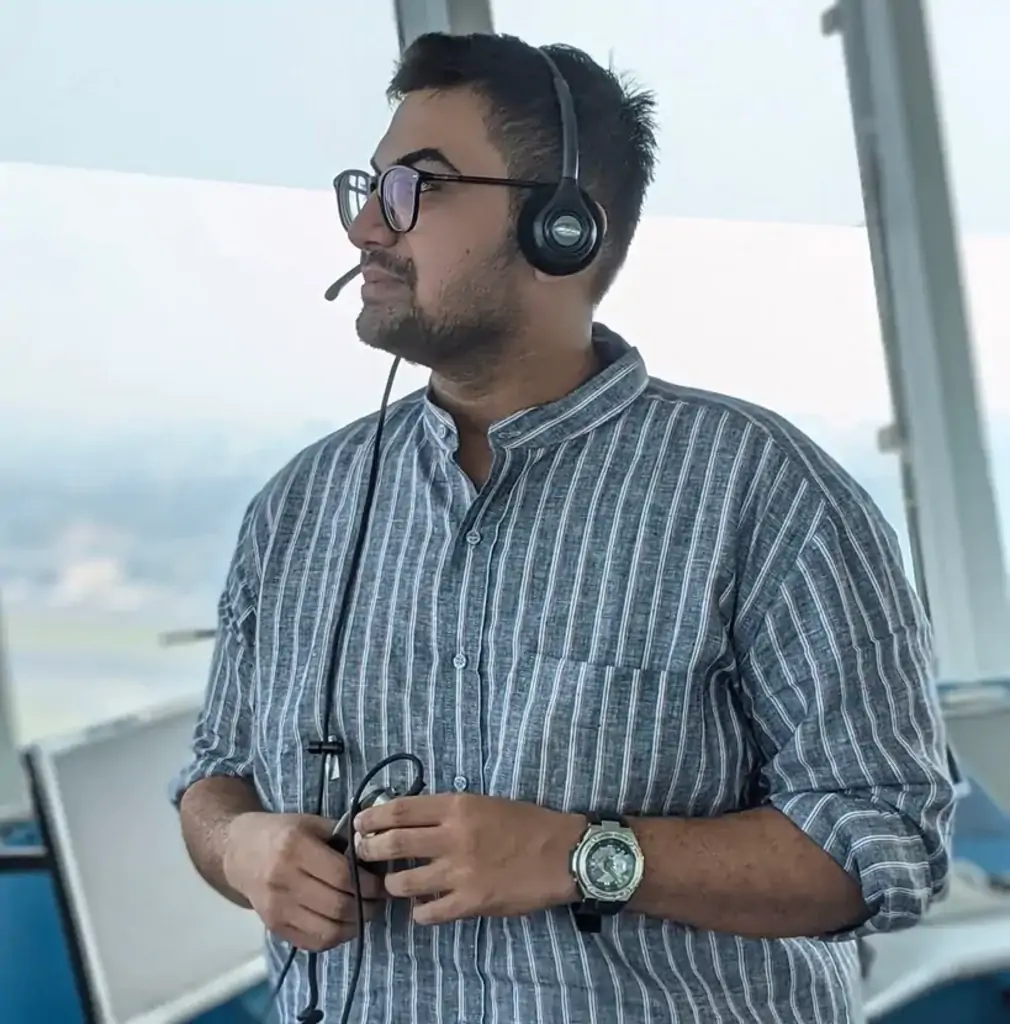
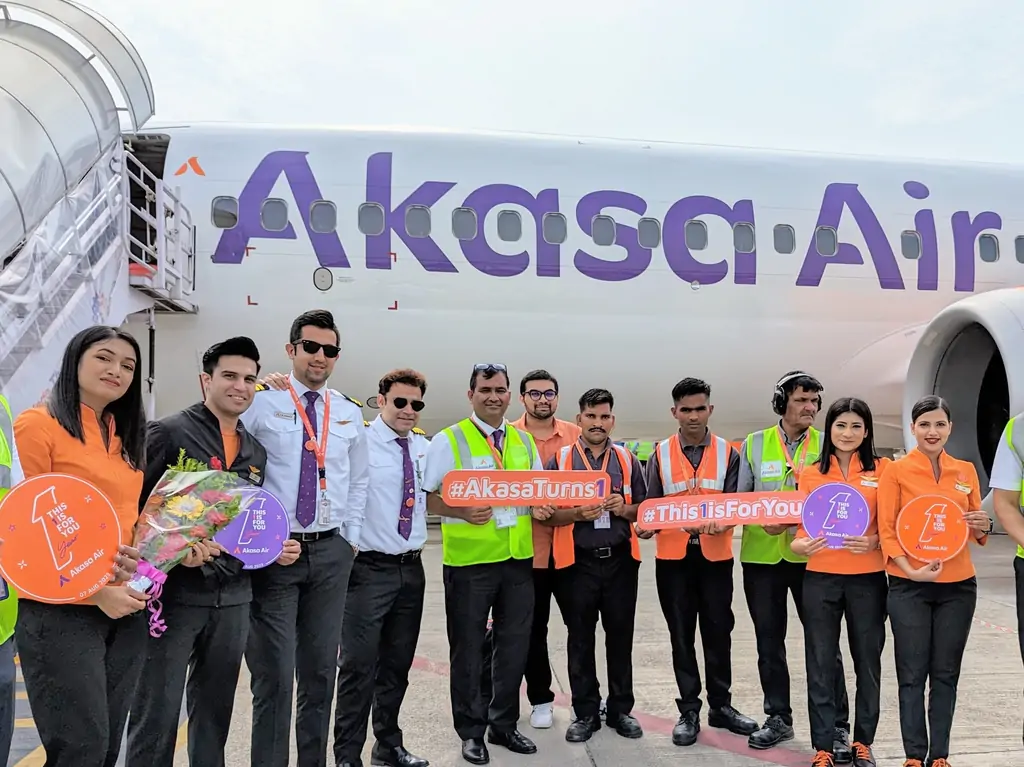

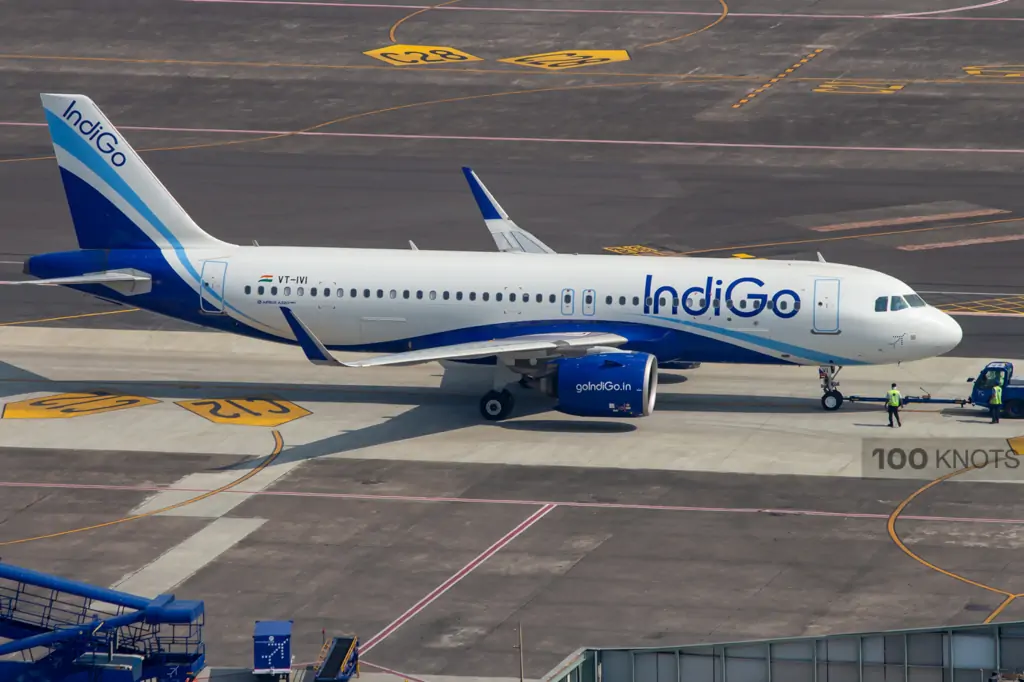

Comment